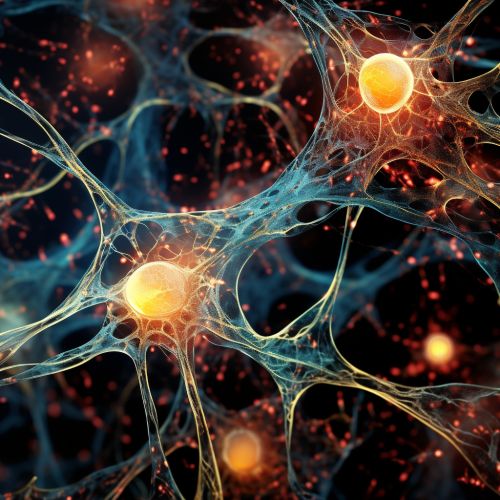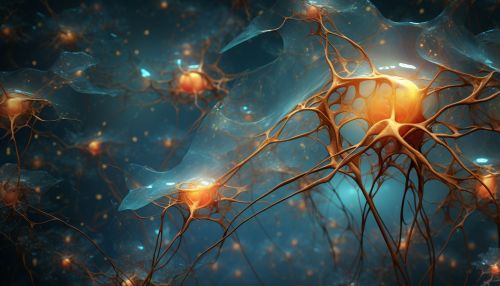Brain Plasticity
Introduction
Brain plasticity, also known as neuroplasticity, is a fundamental principle of neuroscience that refers to the brain's ability to change and adapt as a result of experience. The concept of brain plasticity extends to many aspects of brain function, including learning, memory, and recovery from brain damage[^1^].
History
The concept of brain plasticity has been recognized for hundreds of years, but it was not until the 20th century that it became a central focus of research in neuroscience. Early evidence of brain plasticity came from studies of animals that showed changes in brain structure in response to different experiences[^2^].


Mechanisms of Brain Plasticity
Brain plasticity is mediated by a variety of mechanisms, including changes in the strength of connections between neurons, the growth of new neurons, and the formation of new connections between neurons[^3^].
Synaptic Plasticity
Synaptic plasticity is the ability of the connections, or synapses, between neurons to change in strength. This is thought to be one of the main mechanisms underlying learning and memory[^4^].
Neurogenesis
Neurogenesis, or the growth of new neurons, is another important mechanism of brain plasticity. While it was once thought that neurogenesis only occurred during development, it is now known that it can occur in certain regions of the adult brain[^5^].


Structural Plasticity
Structural plasticity refers to the brain's ability to change its physical structure as a result of learning. This can involve changes in the thickness of the cortex, the size of the neurons, and the number of connections between neurons[^6^].
Factors Influencing Brain Plasticity
A variety of factors can influence brain plasticity, including age, stress, and environmental factors[^7^].
Age
Age is a major factor influencing brain plasticity. While the brain is highly plastic during early development, this plasticity decreases with age. However, even in adulthood, the brain retains a significant degree of plasticity[^8^].
Stress
Stress can have a significant impact on brain plasticity. Chronic stress can lead to changes in the structure and function of the brain, while acute stress can enhance plasticity[^9^].
Environmental Factors
Environmental factors, such as exposure to enriched environments or physical exercise, can enhance brain plasticity. Conversely, deprivation of sensory inputs can lead to decreases in plasticity[^10^].


Brain Plasticity and Learning
Brain plasticity plays a crucial role in learning and memory. Changes in the strength of synaptic connections, known as long-term potentiation (LTP) and long-term depression (LTD), are thought to be the main mechanisms underlying the storage of information in the brain[^11^].
Brain Plasticity and Recovery from Brain Damage
Brain plasticity is also crucial for recovery from brain damage. Following injury, the brain can reorganize itself to compensate for lost functions. This can involve the formation of new connections between neurons, the growth of new neurons, or changes in the function of existing neurons[^12^].


Future Directions in Brain Plasticity Research
Research into brain plasticity is ongoing, with many exciting directions for future research. These include the development of therapies to enhance brain plasticity in conditions such as stroke and Alzheimer's disease, and the exploration of the role of brain plasticity in mental health disorders[^13^].
See Also
References
[^1^]: Kolb B, Whishaw IQ. An Introduction to Brain and Behavior. 4th edition. Worth Publishers; 2013. [^2^]: Merzenich MM, Nelson RJ, Stryker MP, Cynader MS, Schoppmann A, Zook JM. Somatosensory cortical map changes following digit amputation in adult monkeys. J Comp Neurol. 1984;224(4):591-605. [^3^]: Pascual-Leone A, Amedi A, Fregni F, Merabet LB. The plastic human brain cortex. Annu Rev Neurosci. 2005;28:377-401. [^4^]: Bliss TV, Collingridge GL. A synaptic model of memory: long-term potentiation in the hippocampus. Nature. 1993;361(6407):31-9. [^5^]: Eriksson PS, Perfilieva E, Björk-Eriksson T, Alborn AM, Nordborg C, Peterson DA, Gage FH. Neurogenesis in the adult human hippocampus. Nat Med. 1998;4(11):1313-7. [^6^]: Zatorre RJ, Fields RD, Johansen-Berg H. Plasticity in gray and white: neuroimaging changes in brain structure during learning. Nat Neurosci. 2012;15(4):528-36. [^7^]: Sale A, Berardi N, Maffei L. Enrich the environment to empower the brain. Trends Neurosci. 2009;32(4):233-9. [^8^]: Burke SN, Barnes CA. Neural plasticity in the ageing brain. Nat Rev Neurosci. 2006;7(1):30-40. [^9^]: McEwen BS. Stress and hippocampal plasticity. Annu Rev Neurosci. 1999;22:105-22. [^10^]: Nithianantharajah J, Hannan AJ. Enriched environments, experience-dependent plasticity and disorders of the nervous system. Nat Rev Neurosci. 2006;7(9):697-709. [^11^]: Martin SJ, Grimwood PD, Morris RG. Synaptic plasticity and memory: an evaluation of the hypothesis. Annu Rev Neurosci. 2000;23:649-711. [^12^]: Nudo RJ. Postinfarct cortical plasticity and behavioral recovery. Stroke. 2007;38(2 Suppl):840-5. [^13^]: Cramer SC, Sur M, Dobkin BH, O'Brien C, Sanger TD, Trojanowski JQ, Rumsey JM, Hicks R, Cameron J, Chen D, Chen WG, Cohen LG, deCharms C, Duffy CJ, Eden GF, Fetz EE, Filart R, Freund M, Grant SJ, Haber S, Kalivas PW, Kolb B, Kramer AF, Lynch M, Mayberg HS, McQuillen PS, Nitkin R, Pascual-Leone A, Reuter-Lorenz P, Schiff N, Sharma A, Shekim L, Stryker M, Sullivan EV, Vinogradov S. Harnessing neuroplasticity for clinical applications. Brain. 2011;134(Pt 6):1591-609.
